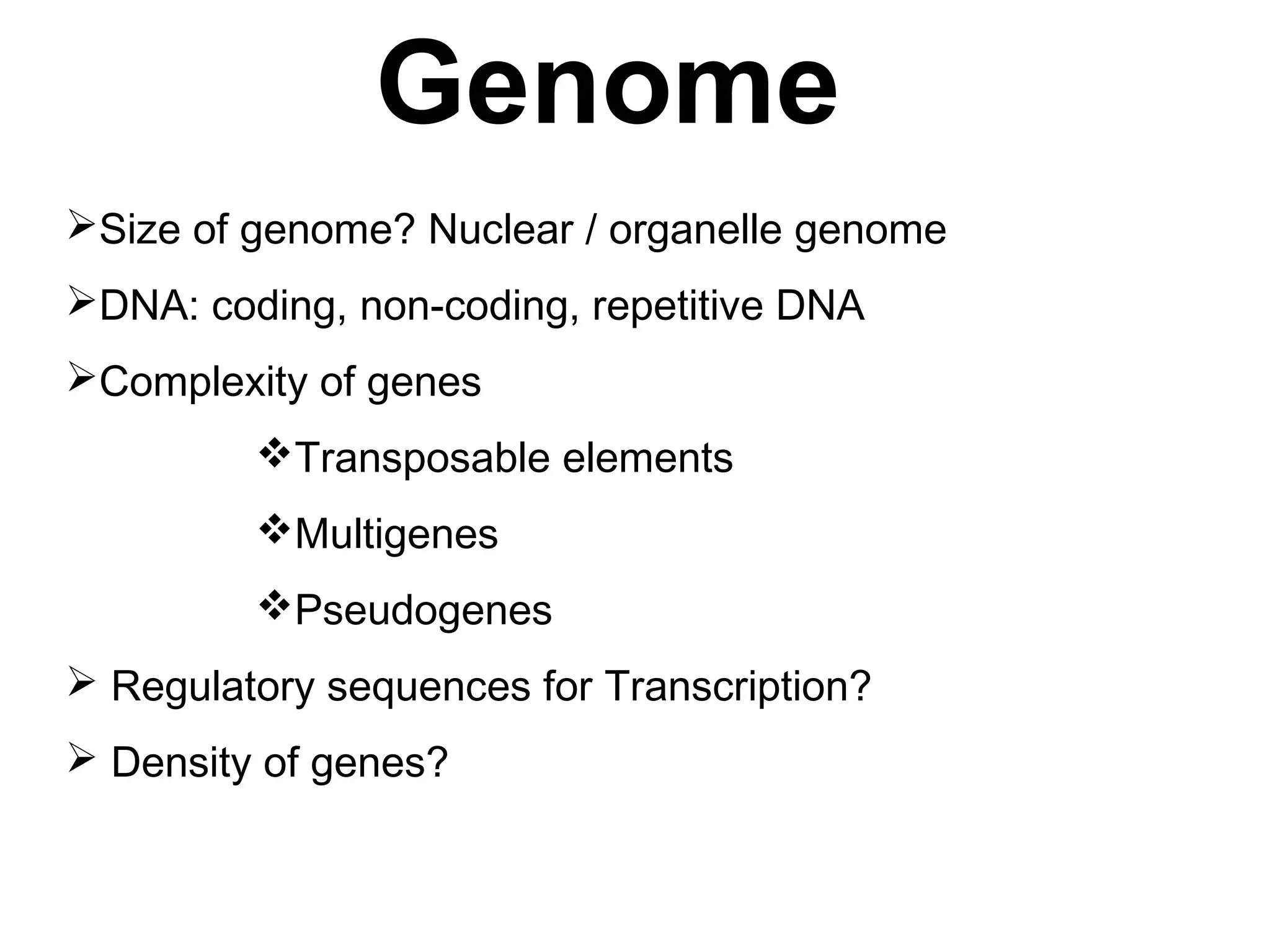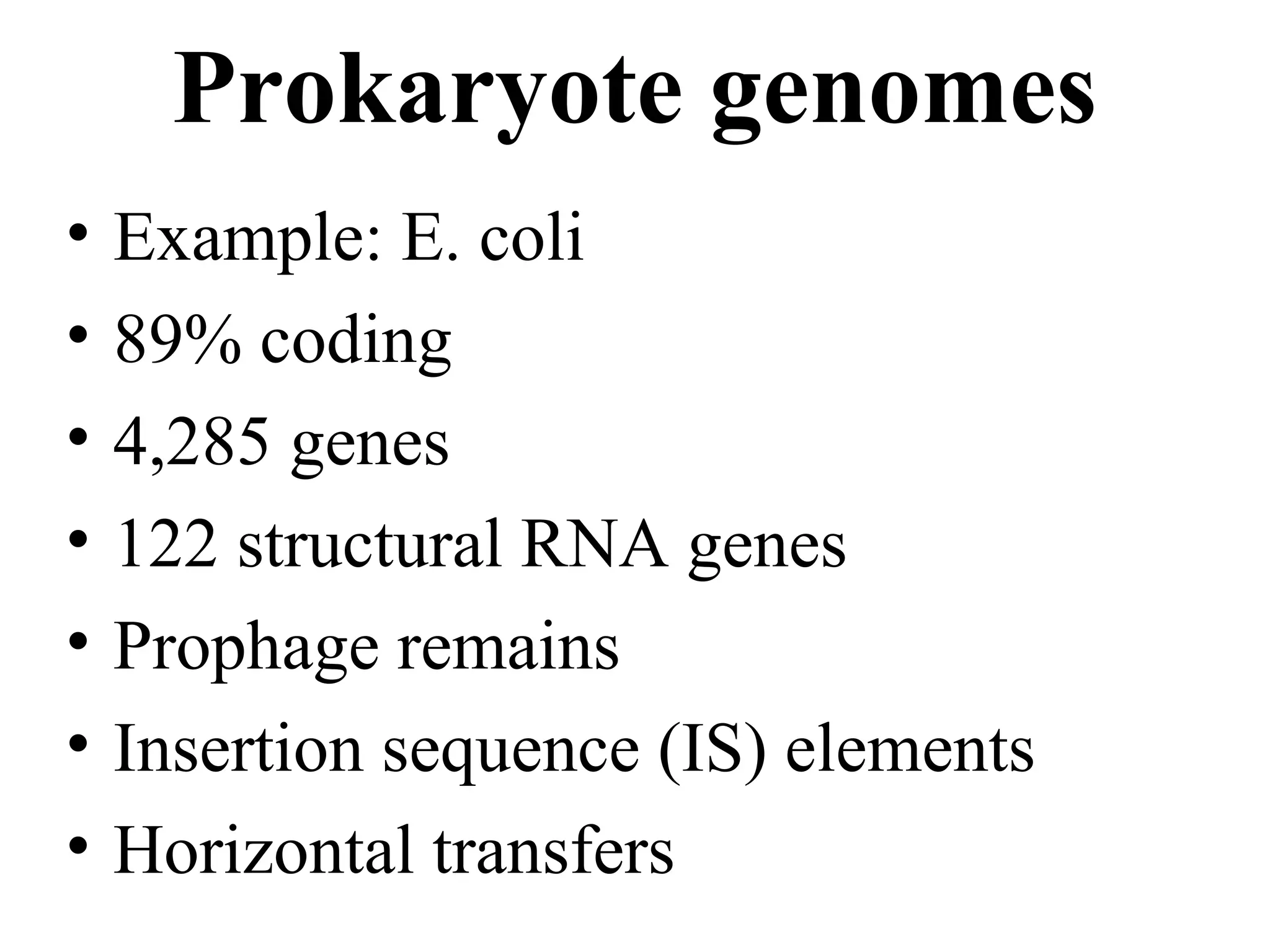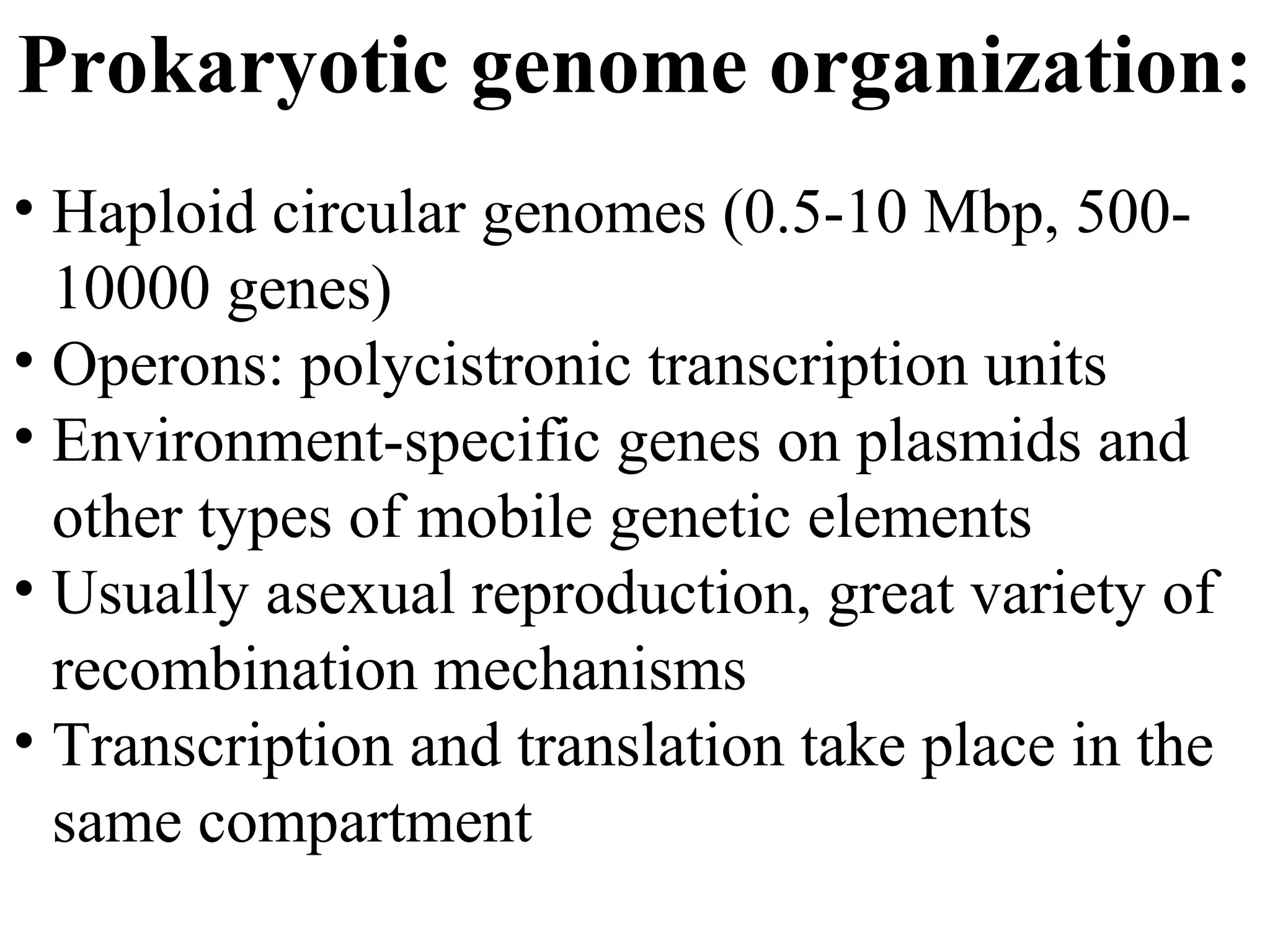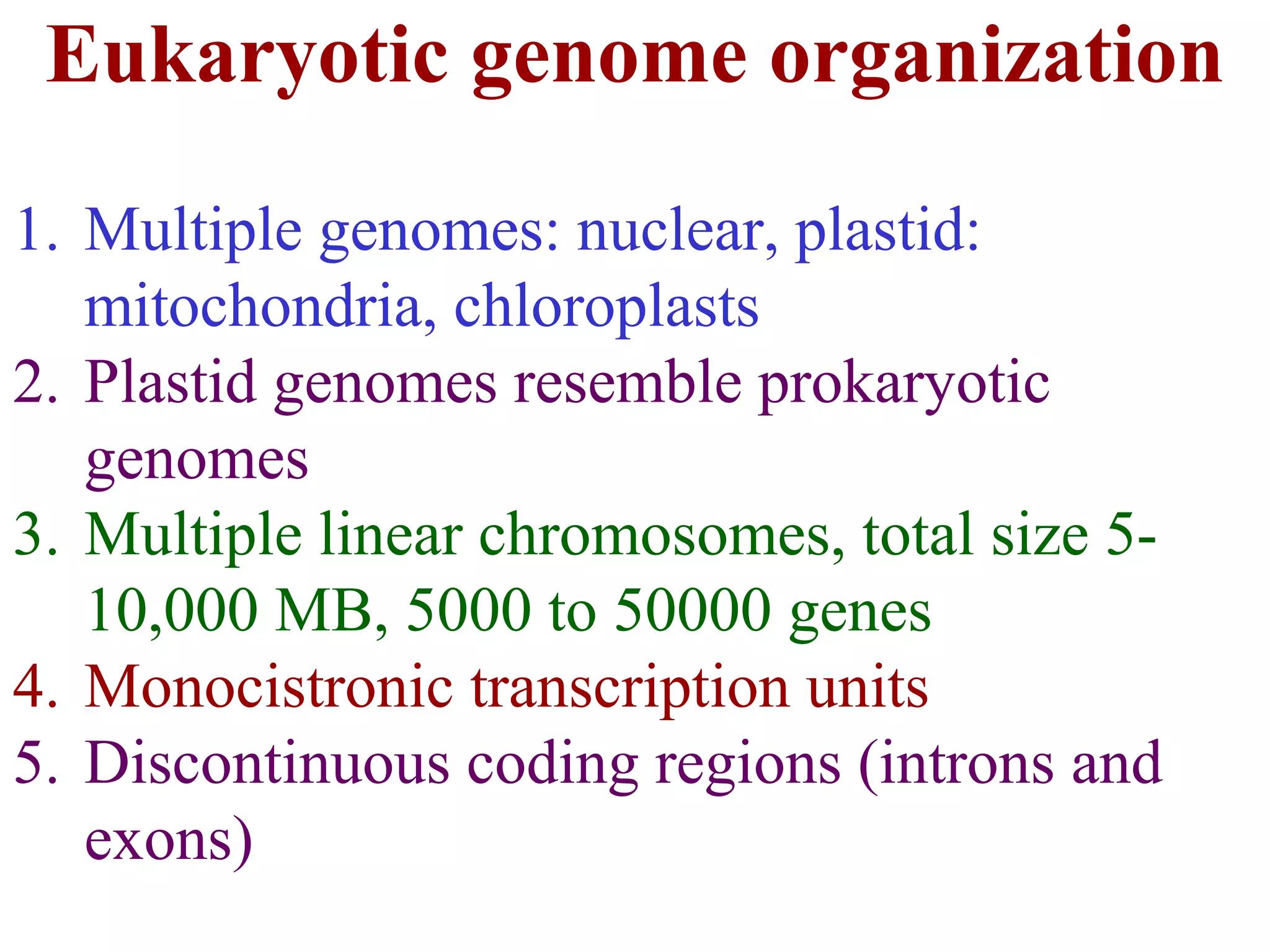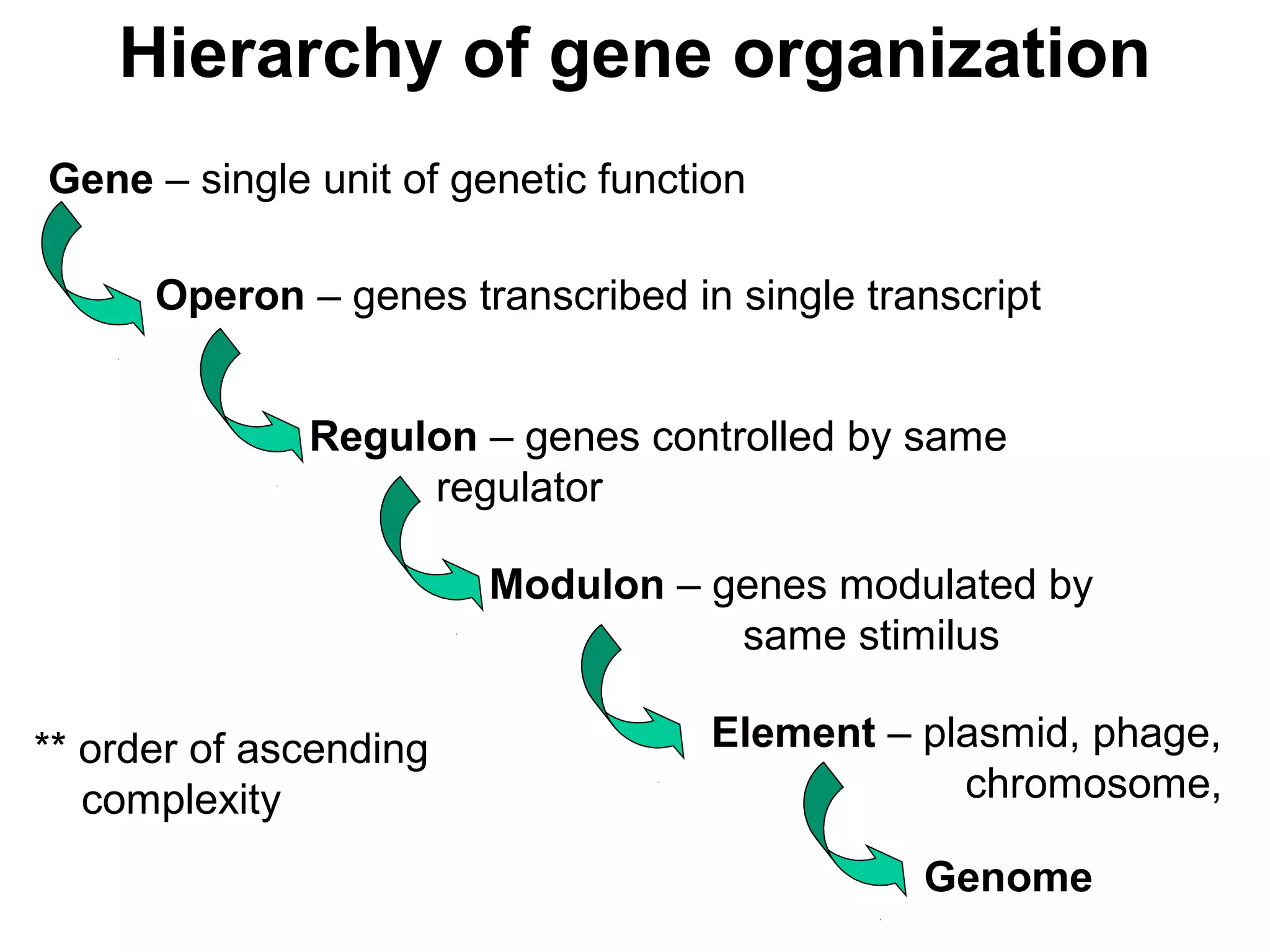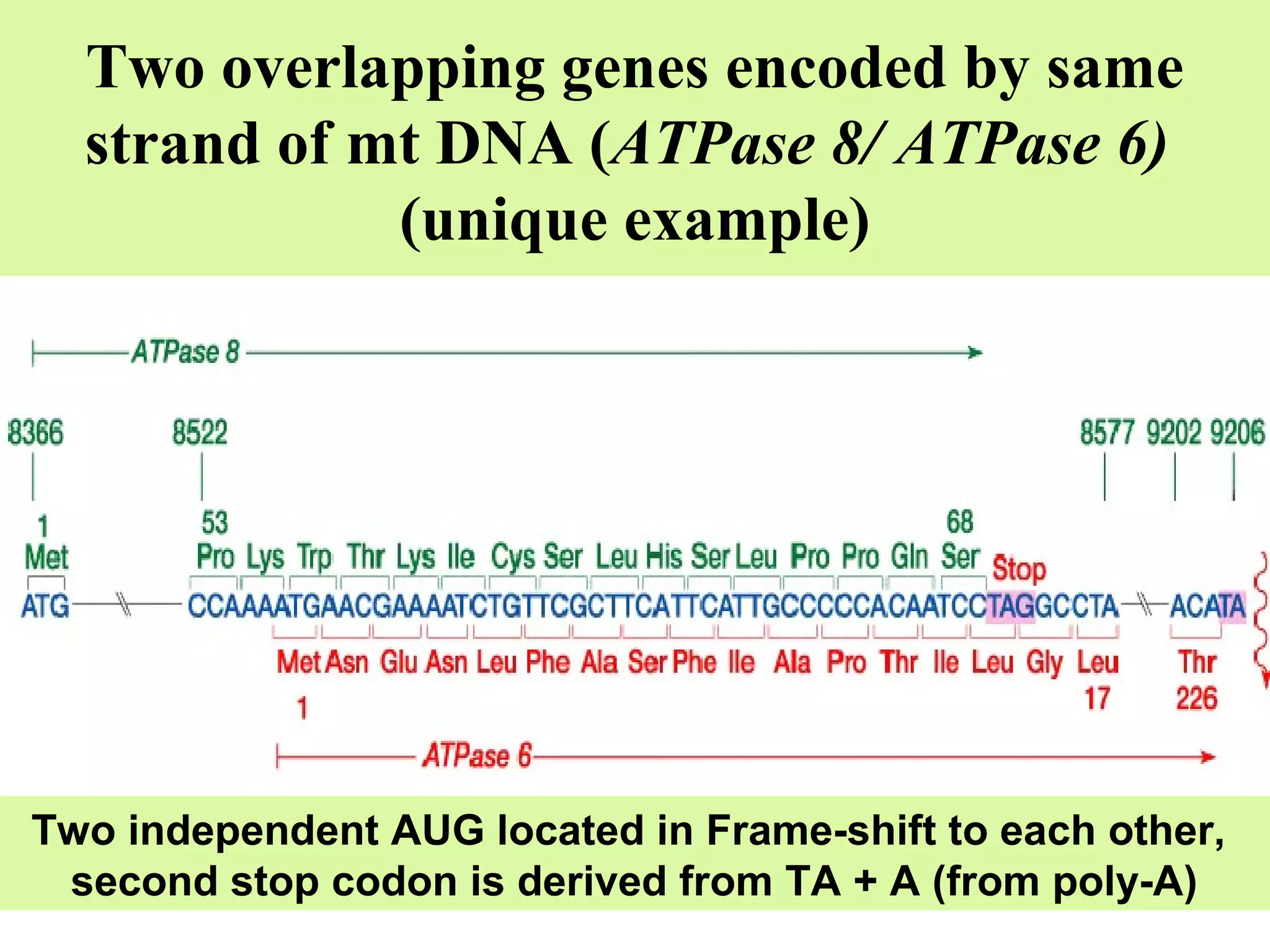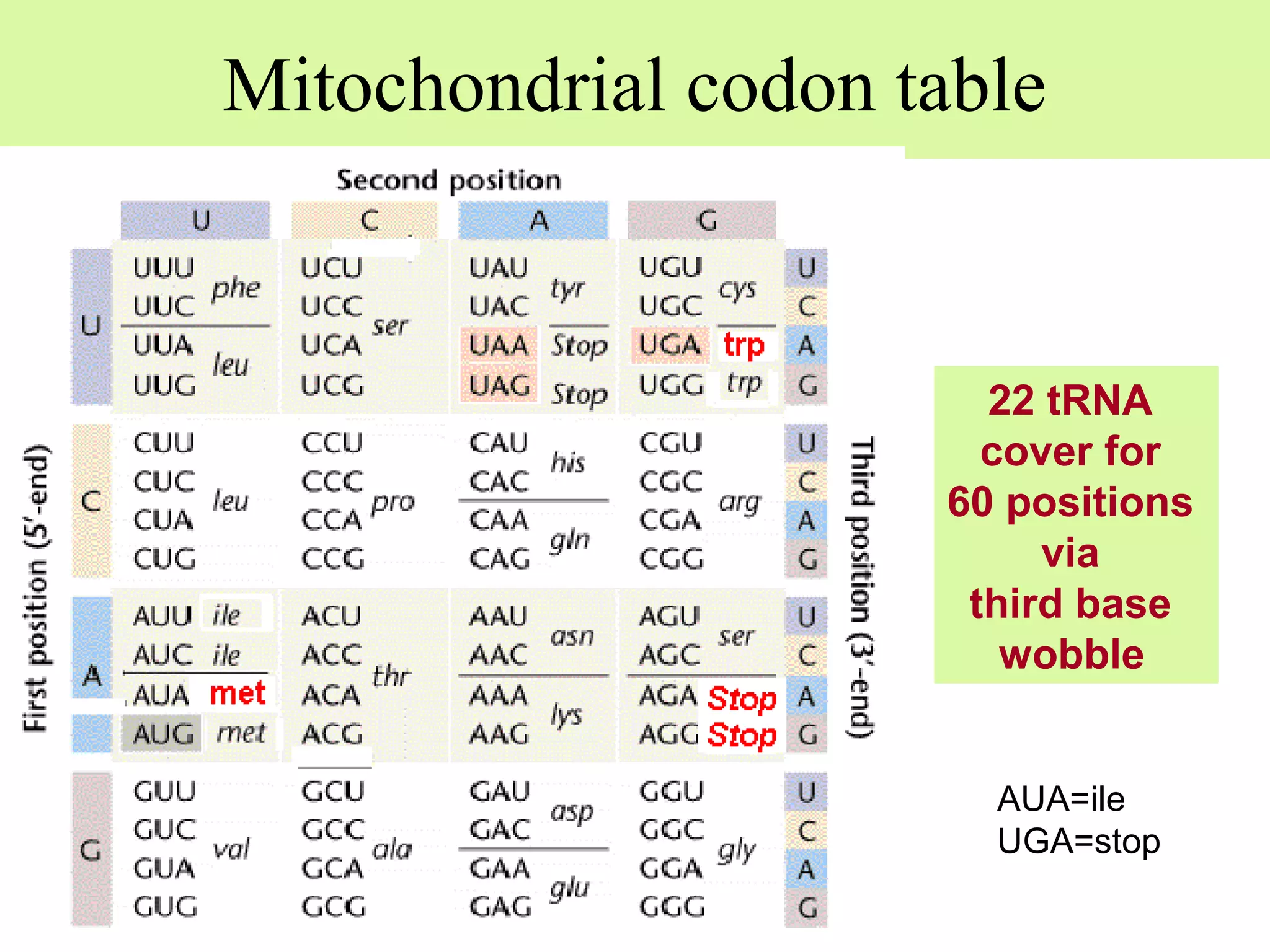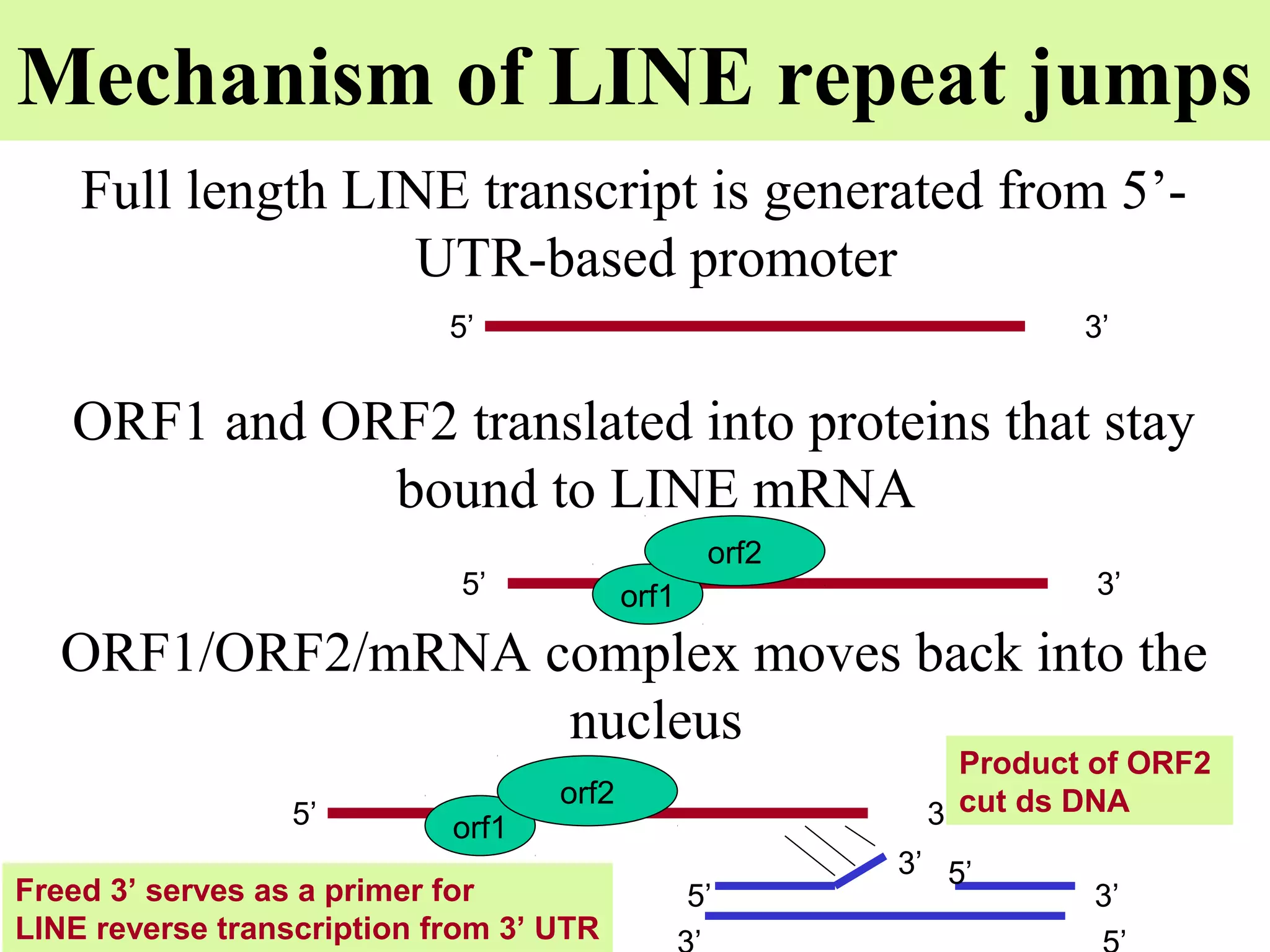This document discusses the organization of eukaryotic genomes. It explains that eukaryotic genomes are much larger than prokaryotic genomes, with most of the DNA being non-coding. Eukaryotic genomes contain multiple linear chromosomes, introns, repetitive sequences, and both coding and non-coding RNA genes. The document also describes different types of repetitive elements like tandem repeats, transposons, retrotransposons, LINEs, SINEs and their roles in increasing genome size. Overall, the document provides an overview of the complex structure of eukaryotic genomes compared to simpler prokaryotic genomes.

